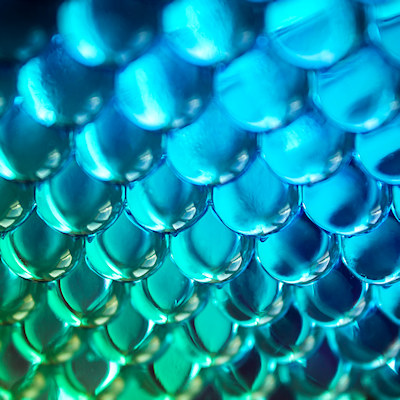January 31, 2023 -- Researchers have developed a data-driven modeling approach for predicting the properties of injected hydrogel blocks.
When blocks of hydrogel are densely packed together, they form a gel-like granular matrix that can act as a solid under some conditions and as a liquid under other conditions. The properties make the material attractive for 3D-printing engineered tissues and in the sustained release of drugs and tissue regeneration in vivo.
However, researchers have lacked the ability to reliably predict the structure and mechanical behavior of the materials. When Connor Verheyen, a graduate student in a Harvard-Massachusetts Institute of Technology (MIT) program, tried to find ways to ensure that the materials are reliably injectable, he was initially limited to trial-and-error experimentation. By changing features, Verheyen gradually optimized materials for injection and revealed an opportunity to automate the process.
"That spurred the effort to take the empirical data, turn it into something that a machine could read and work with, and then ask it to build a predictive map that we could interrogate to help us understand what was going on and how to go to the next step," Verheyen said in a statement.
In an article published Tuesday in Matter, Verheyen and his collaborators describe their attempt to model and predict the hydrogel assembly process. The team split the process into several stages and modeled them separately using data from their own experiments, beginning with an analysis of the effects of the starting materials and moving on to an assessment of the impact of how the blocks are packed together.
They showed that the size and stiffness of the blocks, the viscosity of the fluid between the blocks, and the dimensions of the needle and syringe used to inject the gel affect the injectability of the granular matrix. Having modeled the process, the researchers can now use the model to predict the best way to optimize a material for a particular application and potentially save time by reducing trial and error.
"Our long-term goal was to get to the point where we had reliable and predictable injection properties, because that was something that we really struggled with in the lab -- getting these materials to flow properly," Verheyen said.
Verheyen and other members of the lab of Ellen Roche, associate professor of mechanical engineering at MIT, are now using the model to develop materials for use in applications including the repair of heart defects and the delivery of drugs to the gastrointestinal tract. The researchers have made the model and underlying data available online for use by other labs.
Copyright © 2023 scienceboard.net








